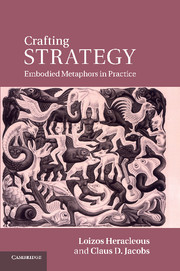Vignette D - Hephata Foundation
Understanding the strategic context of a non-profit health and educational service provider
Published online by Cambridge University Press: 05 June 2011
Summary
Context
Hephata is a non-profit foundation that offers health and education services in the largest German state of North Rhine-Westphalia. As part of Hephata's biannual strategy retreat, the foundation's leadership team – comprising of two executive officers and their direct reports – gathered for three days in order to jointly identify Hephata's strategic challenges and to agree on how to design a structured strategy process. In particular, the goal of the workshop was to define the foundation's strategic initiatives and projects for 2010; to develop and define the performance measures to evaluate these, as well as to approve the formal process on defining strategic initiatives and projects.
Strategic goal of intervention
Within this two-day strategy retreat, a three-hour embodied metaphor intervention was solicited on the first day to develop a shared understanding of Hephata's overall and division-specific strategic environment. In turn, the intervention aimed to identify the main environmental trends the organization needed to respond to and to trigger a discussion on the relative relevance of these trends for Hephata's strategy.
Embodied metaphors
A first model portrayed the general demographic trend towards a decreasing birth rate and the specific consequence in terms of recruiting suitable and sufficient talent to the organization. The foundation not only had difficulties in recruiting sufficient new hires in general, but moreover it lacked a sufficiently large layer of “high performers.” Hephata's staff consisted of many old and a few young staff – a development that was even more pronounced in more rural regions.
- Type
- Chapter
- Information
- Crafting StrategyEmbodied Metaphors in Practice, pp. 115 - 120Publisher: Cambridge University PressPrint publication year: 2011



